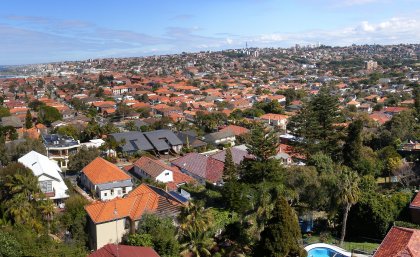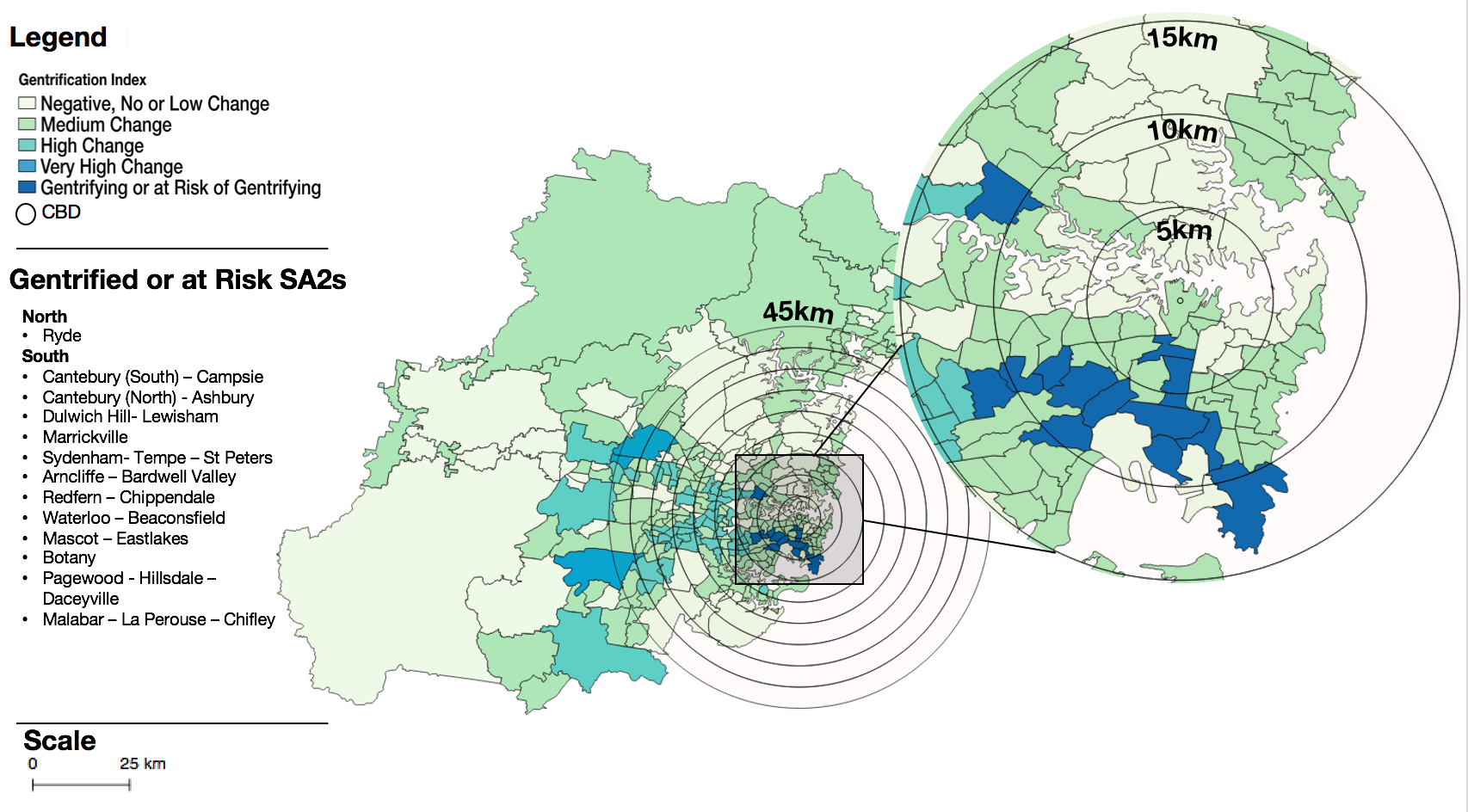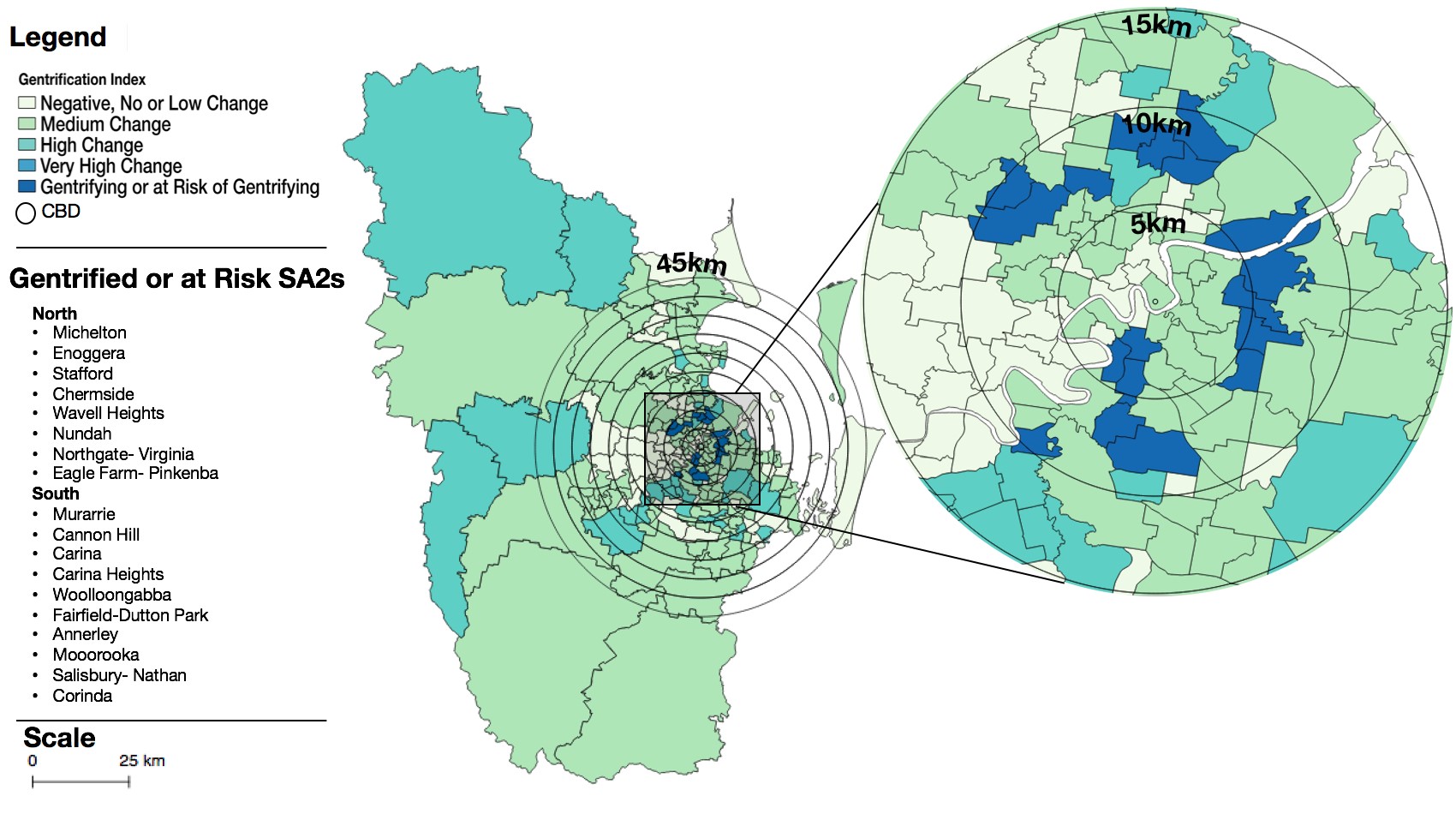
The innermost suburbs of Brisbane, Sydney and Melbourne are not seeing a change in gentrification according to new research from The University of Queensland.
Instead, the highest levels of urban renewal are occurring within a band located five to 15 kilometres from the cities’ central business districts (CBDs).
UQ planning researcher Dr Dorina Pojani said this contradicted urban geography theories that framed gentrification as an inner-city phenomenon.
“The inner CBD suburbs in all three cities are relatively stable and affluent at this point,” Dr Pojani said.
“There are no noticeable changes, with median house prices surpassing one million dollars, and median incomes substantially higher than average.
“Gentrifiers are unable to access the housing market in the inner cities and therefore need to relocate outside the CBD bubble.”

Gentrification in Sydney, New South Wales

Gentrification in Melbourne, Victoria

Gentrification in Brisbane, Queensland.
The researchers looked at common demographic metrics including increasing household incomes, educational attainment, home ownership and white collar occupations as well as decreasing age and growing population density.
These indicators were combined with data from multiple sources, including the Australian census, Google Maps and local council data repositories.
The findings challenge anti-gentrification sentiments or even protests, which in all three cities originate from inner-city suburbs.
“It is clear that community backlash has not stemmed from poor and vulnerable groups fearing displacement,” Dr Pojani said.
“Rather, it may be considered as a manifestation of the NIMBY – Not In My Backyard – syndrome, promulgated by local homeowners – once themselves gentrifiers.
“It may be the case that inner-city communities react to more visible developments in the urban core, which take the form of high-rise, luxury housing and commerce.
“Resistance to inner-city redevelopment may also be a reaction to Australia’s liberal approaches to city planning, which have enabled private developers to build with minimal community participation.”
Dr Pojani and her co-authors believe a new, broader vision for urban housing is needed.
“As the state capitals continue to experience a major housing affordability crisis, governments need to introduce an integrated package of housing policies rather than attempt to ‘patch’ gentrification clusters on an ad hoc basis,” she said.
“A dysfunctional housing system, which produces inequalities and gentrification waves, harms Australian society at large.
“The country risks being divided into two classes – the ‘housing haves’, and the ‘housing have nots’, and no one wants that.”
The research is published in Australian Planner (DOI: 10.1080/07293682.2020.1775666).
The team included Ms Claudia Pegler, Mr Hankan Li, and Dr Dorina Pojani – Claudia Pegler and Hankan Li are former UQ students, now working in the Australian and international planning industries.
Media: Dr Dorina Pojani, d.pojani@uq.edu.au, +61 473 989 847; Dominic Jarvis, dominic.jarvis@uq.edu.au, +61 413 334 924.
.jpg)












